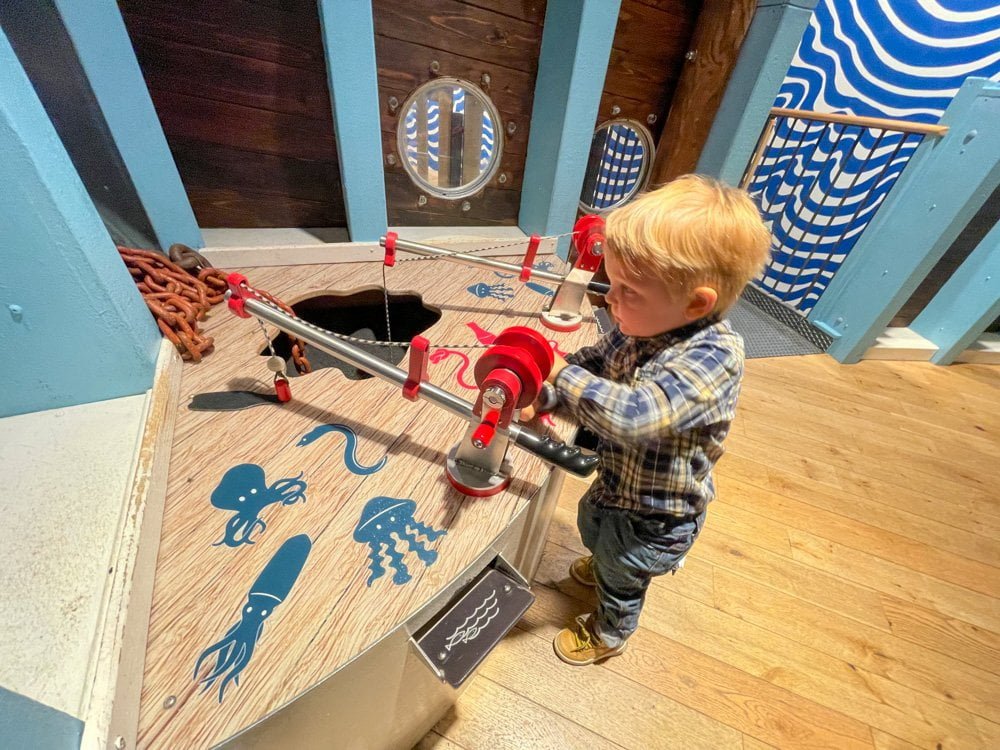Many travelling parents wonder how to combine exhibitions, sightseeing and museums with children. These activities are perfect for a weekend or an out-of-town trip in any weather. This post offers tips on organising the ideal cultural visit with children with a dash of adventure.
Table of Contents
Why visit museums with children
Every child is potentially a curious little traveller. Inviting him on a trip out of town or visiting a museum can help him deepen and define his interests. Art, science and technology can also be learned (in part) through informal learning, acquiring knowledge during everyday life.
A child accustomed to experimenting in science museums or drawing activities in art galleries is likely to be much more responsive and curious about the same topics at school. The best thing is that there is no minimum age to start visiting museums as a family and have fun together.
Any destination can become a source of inspiration. With my son, we have visited aqueducts and sewers, ridden vintage trams in public transport museums, created electric circuits, explored mines in science museums, painted abstract pictures and much more. Every trip can be an opportunity to discover and nurture children’s talents, whether artists or budding engineers.
The parents’ contribution is crucial to get the most out of these adventures. There are so many offers and stimuli, and it is up to us to choose which activities to propose when organising a family trip to stimulate curiosity and imagination in children.

Tips for stress-free museum visits with kids
Visiting a museum or taking part in a guided tour with children is wonderful and exhausting at the same time. Below, you can read the best tips for visiting a museum without stress. First of all, you have to completely erase from your mind the idea of hypnotising your child with a tablet or smartphone and carrying them in a pram.
Visiting a museum with children requires, above all, patience, an indispensable skill for travelling as a family, whether it is a journey across Europe or a short trip out of town. As you can read in the blog, I already have several trips under my belt with my son. Although it was tiring on some occasions, we really enjoyed visiting all the destinations together at his pace.
1. Take your child to museums straight away
The first tip is to start taking your child to museums early on; it is never too early. If they are very young, you can keep them in a sling or baby carrier and walk around the halls at your own pace. Remember that your goal is to familiarise them with the environment and begin to discover things different from their everyday life.
When visiting cultural attractions becomes the norm, it is also easier for children to behave appropriately. That is, don’t touch where you can’t and don’t run around the halls, which will still happen from time to time, so you have to be patient enough to repeat where you can’t touch and perhaps prefer interactive museums if your child is particularly active.

2. Choose child-friendly museums
Not all museums are just for looking without touching anything. There are countless places with interactive installations for young and old explorers. Museums with family activities, planetariums, zoological parks, aquariums, botanical gardens and even some mining sites are all places where you can experience and learn something new while having fun with nature, science and technology.
Before organising your visit, check whether there are children’s activities to book or dedicated tour routes. Some museums are entirely interactive, while others have specific children’s play areas or visiting times with curators or entertainers.
3. Follow your child’s interests
A very young child will probably have little interest in museums where he cannot touch anything, so it is up to your skill to engage him. Dwell on paintings, sculptures or exhibitions that seem to intrigue him and tell him what they represent in an easy-to-understand way. Even if he doesn’t seem too interested, you will be amazed to hear him describe what he saw at his grandparents’ or kindergarten after some time.
From the age of three/four, children start to be more curious and ask many questions, so it is the perfect time to start visiting museums with interactive activities and workshops. I assure you that you will have a lot of fun together if you know how to choose activities suitable for your child.
At this age, children start to develop their preferences. My son, for example, did not particularly enjoy the National Gallery of London’s life drawing workshop, which I enjoyed very much. At the same time, his interest in technology and means of transport became increasingly evident. At the Air and Space Museum in Paris, he was amazed by the Concorde plane, and now he is asking to visit more and more aviation museums.

4. Introduce the museum’s contents at home
To ensure your cultural visit goes well, start preparing your child a few days beforehand by telling them what you will see to stimulate their curiosity. Some museum sites offer materials for children to download, and others provide virtual tours. Sometimes, you can also find specific tourist guides for children.
Also, you should look for information on activities and tours on travel blogs and YouTube, especially to find out in advance whether they are fully interactive museums or if there are dedicated children’s areas. Especially in museums with traditional layouts, where children cannot touch anything, it is essential to know what children can do in advance.

5. Book children’s activities in the museums
Check if the museum you plan to visit provides guided tours or activities specifically for children. In this case, I recommend to book one as soon as possible. These tours are usually in the local language. While they may have an additional cost, they are genuinely engaging and help children better understand and appreciate the museum’s contents if they speak the language.
With my son, we dug up archaeological finds, drew circus scenes, and connected electronic circuits to lighten up planets and space rockets. Again, you will be delighted to discover that the activities carried out and the guide’s stories will remain in your child’s memory long afterwards.
6. Set realistic expectations
Despite all the suggestions you have read so far, remember that you are constantly dealing with children. In museums with traditional layouts, consider that a child’s attention span rarely exceeds one hour (and I am optimistic). It is also unrealistic to expect your child to sit still and silent during a visit to an art gallery.
My child, mostly passionate about transportation and engineering, wouldn’t let me see a photography exhibition or read any captions in a museum. For him, art galleries are totally dull.
Some activities are realistically impossible to do. Even with children who are more accustomed to travelling and going to museums. On the contrary, in museums with interactive installations or activities specifically for children, you can spend the whole day without ever getting bored.

7. Always bring a snack with you
A thirsty or hungry child can ruin even the best day. During my travels with my son, I learnt to always bring a snack with me. Some museums have a cafeteria with a children’s menu, others do not. To avoid being prepared, I always carry a juice or a fruit in my rucksack and a water bottle. If we have planned the whole day out, sandwiches as well.
Packing a backpack with lunch or a snack has become our ritual before every trip. Remember that eating in the exhibition rooms is generally not allowed in museums. For snacks, look for picnic areas or go outside in the courtyard.
8. Have fun with your child
Learning about science, nature, and technology aspects can be fun. Finding out why volcanoes erupt lava, how raw materials are extracted and how a space rover works are just some of the things you can learn with your child.
Your child’s questions and enthusiasm in the museums you visit together will become fantastic travel memories and the basis on which you can build future itineraries together. Once back home, you can look for other similar museums together and start planning the next family cultural trip.

How to choose museums to visit with children
The best cultural destinations to visit with children are those that pique their curiosity. Don’t discard any museum or art gallery, as children don’t have the same aesthetic prejudices as adults. Usually, modern art museums organize the most exciting art activities for children. As parents, it’s our responsibility to guide our children on the path of discovery, telling them that every work of art or scientific invention has a story to uncover.
When choosing itineraries and museums, I match my child’s interests with my own as much as possible. Although we don’t always agree, I prioritize science museums and transportation over art galleries when travelling with him. After all, I also enjoy riding a vintage tram or boarding a supersonic plane.
Feel free to comment telling what strategies you apply to travel and visit museums with your children.
